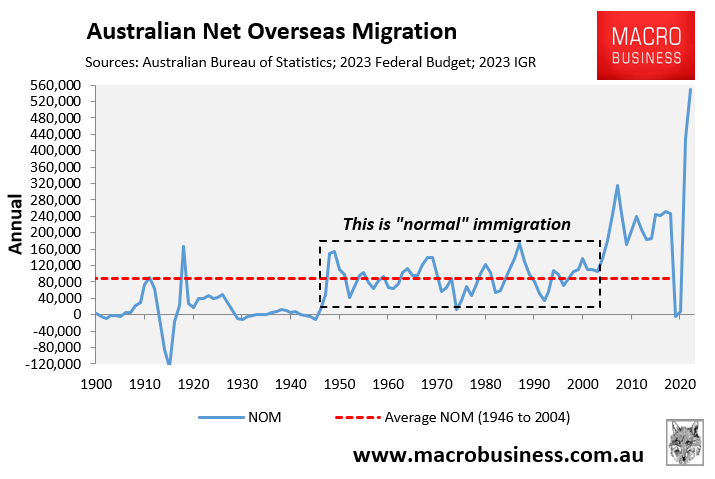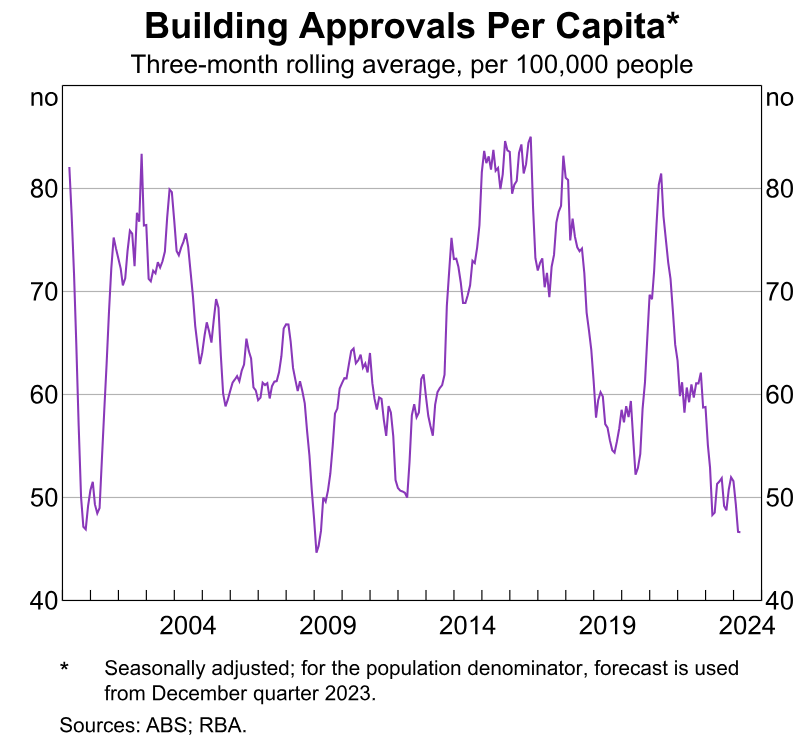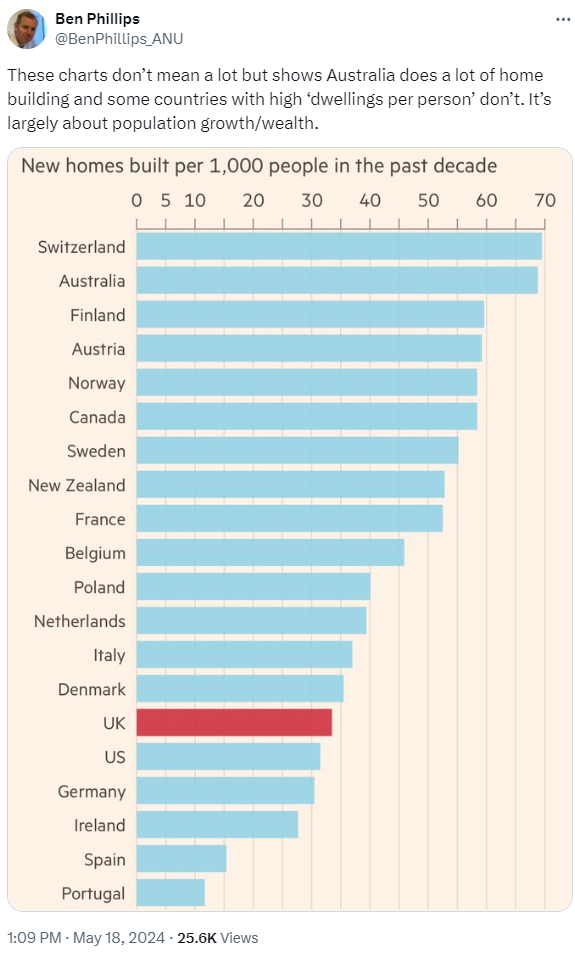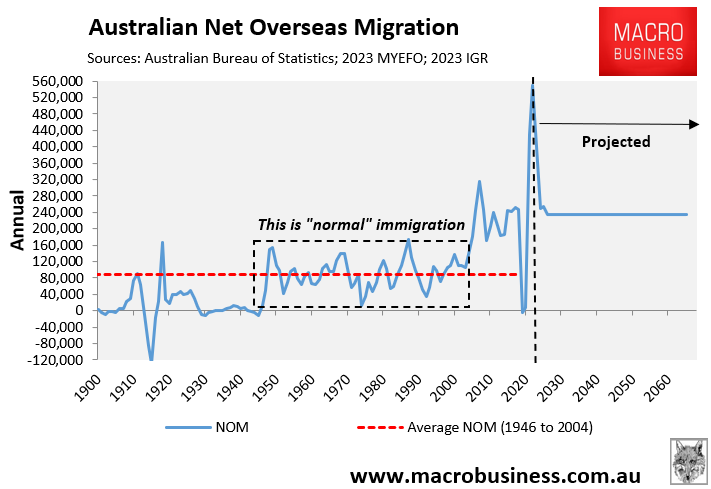Last week, the federal budget and the Reserve Bank of Australia (RBA) released research showing that Australia has not built enough homes to keep pace with the nation’s high population growth. This growth accelerated from 2005 when net overseas migration (NOM) more than doubled.

They presented the problem as a supply issue, suggesting Australia is terrible at building homes.
The federal budget claimed that “Australia’s housing supply is low by international standards. Australia has among the lowest number of homes as a proportion of the population in the OECD”:

“Undersupply is a key factor that has driven increases in rents, mortgage repayments and house prices”, the Budget says.
The RBA produced the below chart showing that building approvals per capita are tracking at historic lows:

The ANU’s Ben Phillips has challenged the view that Australia is ‘bad’ at building homes, posting the below cross-country comparison of home building rates over the decade to 2022:

It turns out that Australia has built a lot of homes.
This makes sense given that Australia has one of the highest shares of construction workers in the OECD:

A paper released this month by ANU summarised the supply issue as follows:
“The main pressure on house price increases is population growth, and this has been strong for most years due in large part to migration policy”.
The quickest, easiest, least expensive, and optimal solution to Australia’s housing shortage is to lower net overseas migration to a level that is well below the nation’s capacity to build homes and infrastructure.

The latest Intergenerational Report’s (IGR) NOM projections are illustrated below:

Under the IGR’s projections, Australia’s population will swell to 40.5 million people by 2062-63, which is a 13.5 million population increase on the current level of 27 million:

That 13.5 million population increase is the equivalent of adding another Sydney, Melbourne, and Brisbane to Australia’s current population in just 39 years.
Australia will never build enough homes or infrastructure for that level of population increase.
Australia’s NOM should instead be cut to historical levels of around 120,000 a year.
The last time Australia’s annual NOM was at 120,000 was in early 2005, when the permanent migrant program was also set at 120,000.
What is so bad about returning to this level? Certainly, our renters and future home buyers will be better off, as will users of the nation’s infrastructure, who will benefit from lower levels of congestion.

